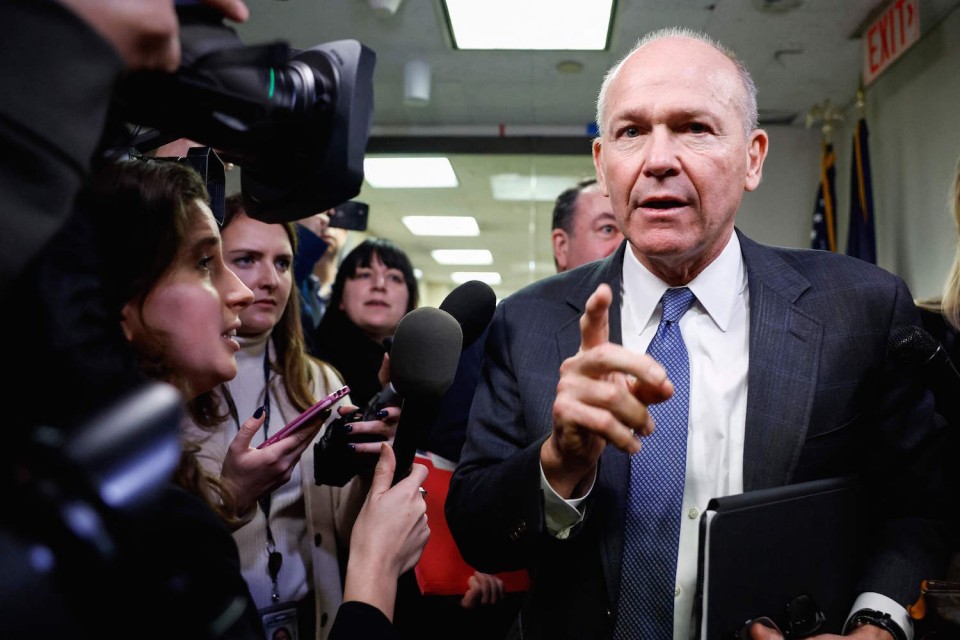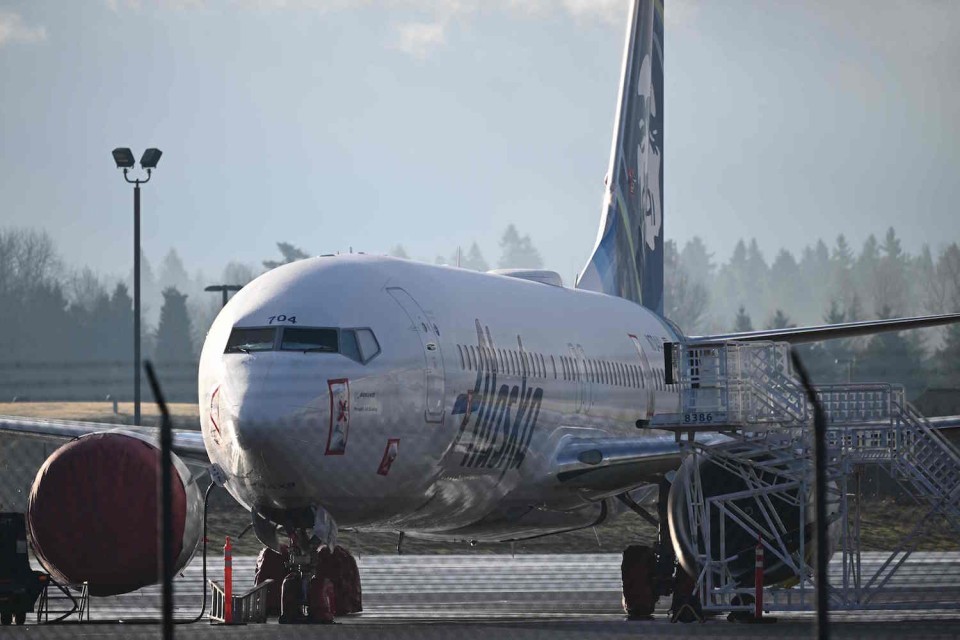
By John BIERS
NEW YORK, Jan 25, 2024 (AFP) – US regulators approved a detailed inspection framework that would allow the return to service of Boeing 737 MAX planes grounded after an emergency landing earlier this month, officials said Wednesday.
Shortly after the Federal Aviation Administration announced inspection protocols on the Boeing 737 MAX 9, United Airlines said it expects grounded aircraft to return to service starting Sunday.
“We will only return each MAX 9 aircraft to service once this thorough inspection process is complete,” said a statement from Toby Enqvist, United’s chief operations officer.
“We are preparing aircraft to return to scheduled service beginning on Sunday.”
The FAA announcement is a major step after the agency grounded 171 MAX 9 planes following the January 5 incident on an Alaska Airlines plane.
The grounded 737 MAX jets have the same configuration as the Alaska Airlines jet that suffered a blowout of a panel on the fuselage, exposing passengers to open air and necessitating an emergency landing.
No one was injured in the incident, but safety inspectors have said it could have been catastrophic.
Under the FAA’s “enhanced maintenance” process, airlines will undertake an inspection of specific bolts and fittings, detailed visual inspections of plugs and components and address “any damage or abnormal conditions” associated with the part, known as a door plug, the FAA said.
The inspection will ensure parts are “in compliance with the original design which is safe to operate,” the FAA said. “This aircraft will not operate until the process is complete and compliance with the original design is confirmed.”
In a statement published later Wednesday, Boeing pledged “to cooperate fully and transparently with the FAA and follow their direction.”
It added: “We will also work closely with our airline customers as they complete the required inspection procedures to safely return their 737-9 airplanes to service.”

– Production hikes halted –
The latest 737 MAX incident was the first major in-flight safety issue on a Boeing plane since two fatal 737 MAX crashes — one in 2018 and one in 2019 — led to a nearly two-year grounding of the aircraft.
The FAA has described the January 5 near-miss as unacceptable, vowing a heavy program of oversight of Boeing and its operations.
The US agency will not permit Boeing to boost output on the MAX until “we are satisfied that the quality control issues uncovered during this process are resolved,” said FAA Administrator Mike Whitaker in Wednesday’s statement.
Earlier Wednesday, Boeing Chief Executive Dave Calhoun ventured to Capitol Hill to discuss the episode.
“We fly safe planes,” Calhoun told reporters ahead of a private meeting at the Senate Commerce Committee.
“I’m here today in the spirit of transparency to number one recognize the seriousness” of the issue, and to “answer all their questions because they have a lot of them,” he said.
Also Wednesday, the Seattle Times published a detailed update on the probe, based on a whistleblower who said that the panel that blew off was removed for repair at Boeing’s Renton, Washington plant and reinstalled improperly.
Moreover the work on the door plug was not recorded properly in Boeing’s systems, which meant it wasn’t formally inspected before the plane was handed over to the customer, according to the Seattle Times report.
Boeing said it was unable to comment on the Seattle Times report, referring questions to the National Transportation Safety Board (NTSB), which is probing the incident.
– Senate hearings ahead –
An NTSB investigator is scheduled to return to Renton on Friday as part of building a “timeline from the early stages of production of the door plug to the accident flight,” said an NTSB spokesperson.
As part of the investigative process, the NTSB will review documentation related to the airplane, including production, manufacturing and maintenance.
Following a meeting with Calhoun, Senator Maria Cantwell, a Washington Democrat who chairs the committee, said she planned hearings to investigate the “root causes of these safety lapses,” according to a statement.
“The American flying public and Boeing line workers deserve a culture of leadership at Boeing that puts safety ahead of profits,” Cantwell said.







